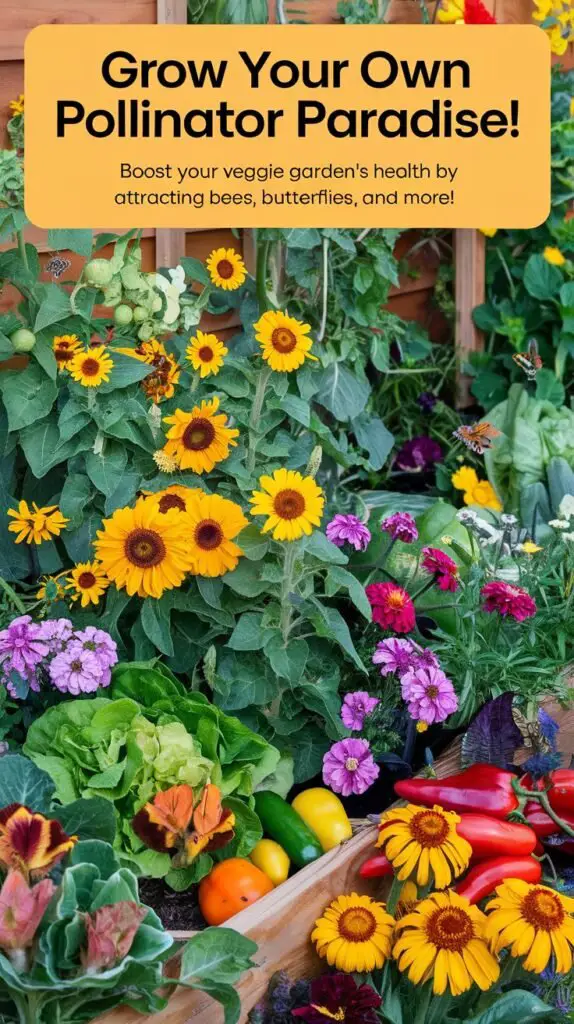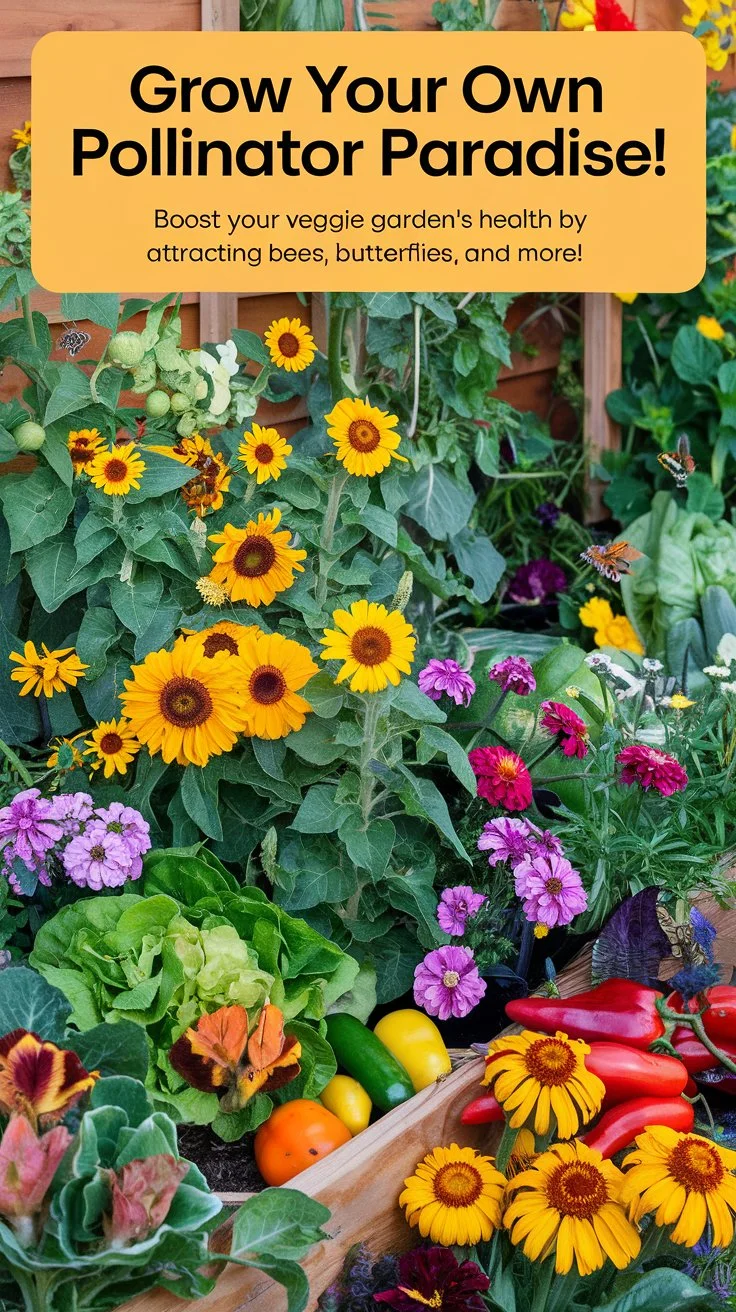Boost your veggie harvest by attracting beneficial pollinators! Learn expert tips on plant selection, garden design, and sustainable practices to create a buzzing, productive garden ecosystem.
Attracting pollinators to your vegetable garden is crucial for maximizing yields and supporting local ecosystems. Key strategies include planting a diverse range of flowering plants, providing water sources, avoiding pesticides, and creating shelter for pollinators. By implementing these practices, you can transform your garden into a thriving habitat for bees, butterflies, and other beneficial insects.

Hey there, fellow gardeners! I’m Maya, and I’ve been cultivating pollinator-friendly vegetable gardens for over 15 years. Let me share some tried-and-true methods to turn your garden into a pollinator paradise. Trust me, your veggies will thank you for it!
1. Diverse Planting for Continuous Blooms
Pollinators need food throughout the growing season. Here’s how I ensure a constant buffet:
- Plant a mix of annuals, perennials, and herbs
- Choose native plants adapted to your region
- Aim for blooms in every season, from early spring to late fall
Top Pollinator-Friendly Plants:
- Sunflowers
- Lavender
- Borage
- Zinnia
- Cosmos
2. Create a Pollinator-Friendly Vegetable Garden Layout
Strategic placement of flowers can make a big difference:
- Interplant flowers with vegetables
- Create border plantings around your veggie beds
- Use companion planting techniques (e.g., marigolds with tomatoes)
3. Provide Water Sources
Pollinators get thirsty too! Here’s how I keep them hydrated:
- Set up shallow water dishes with pebbles for safe landing spots
- Consider installing a small fountain or birdbath
- Keep water sources clean and refreshed regularly
4. Avoid Pesticides
Chemicals can harm beneficial insects. Instead, try these natural approaches:
- Practice integrated pest management
- Use physical barriers like row covers for pest-prone crops
- Encourage beneficial predators like ladybugs and lacewings
5. Create Shelter and Nesting Sites
Pollinators need safe spaces to rest and reproduce:
- Leave some areas of your garden “wild” with leaf litter and bare soil
- Install bee hotels for solitary bees
- Plant dense shrubs or tall grasses for butterfly shelter
6. Choose Single Flowers Over Doubles
While double flowers look pretty, they often lack accessible pollen:
- Opt for single-flowered varieties when possible
- Look for open-centered flowers that allow easy access for pollinators
7. Plant in Clusters
Pollinators prefer larger targets:
- Group similar plants together in clusters of 3-5
- Create “landing pad” areas with flat-topped flowers like yarrow or dill
8. Extend the Season with Succession Planting
Keep the buffet going as long as possible:
- Stagger plantings of annuals every few weeks
- Include early spring bloomers like crocus and late fall flowers like asters
9. Provide Sunny, Sheltered Spots
Most pollinators prefer warm, calm areas:
- Create windbreaks with shrubs or fences
- Ensure your pollinator plants receive at least 6 hours of sun daily
10. educate Your Community
Spread the word to create a larger pollinator-friendly area:
- Share extra seedlings or cuttings with neighbors
- Organize a community planting day
- Advocate for pollinator-friendly practices in public spaces
Attracting pollinators to your vegetable garden not only boosts your harvest but also contributes to the health of your local ecosystem. By providing food, water, and shelter, you’re creating a haven for these essential creatures. Remember, every flower counts, so even small changes can make a big difference.
Happy gardening, and may your vegetable patch be buzzing with life!
FAQs About Attracting Pollinators
Q: What’s the best time of day to observe pollinators in my garden?
A: Many pollinators are most active during warm, sunny periods, typically from mid-morning to early afternoon. However, some species, like certain moths, are active at dawn, dusk, or night.
Q: Can I still attract pollinators if I have a small balcony garden?
A: Absolutely! Container gardens can be excellent pollinator habitats. Focus on compact, nectar-rich plants like herbs (basil, mint, oregano) and dwarf flowering plants.
Q: Are all bees good pollinators?
A: While honey bees are well-known pollinators, many native bee species are even more efficient. Bumble bees, mason bees, and leafcutter bees are all excellent pollinators.
Q: How can I support pollinators during drought conditions?
A: Choose drought-tolerant plants, mulch to retain soil moisture, and consistently provide clean water sources. Consider installing a drip irrigation system to conserve water while keeping plants healthy.
Q: Are there any vegetables that are particularly good for pollinators?
A: Yes! Many vegetables produce flowers that attract pollinators. Squash, pumpkins, cucumbers, and melons have large, showy flowers that are pollinator favorites. Allowing some of your leafy greens or herbs to bolt can also provide excellent pollinator food.
Remember, creating a pollinator-friendly garden is an ongoing process. Observe what works in your space and don’t be afraid to experiment with different plants and techniques. Your efforts will be rewarded with a vibrant, productive garden ecosystem!
For more gardening tips and plant care guides, visit usagardenhub.com.


3 thoughts on “10 Proven Strategies to Attract Pollinators to Your Vegetable Garden”